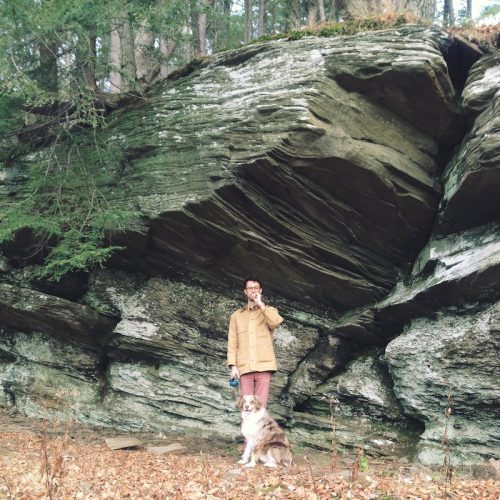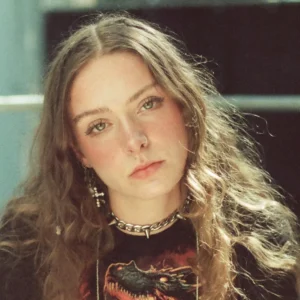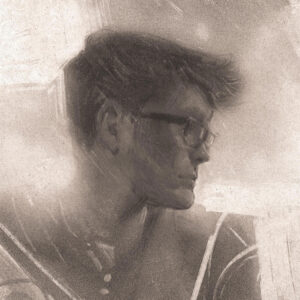Sonically ambitious and creatively raw, we get “Lucky Star in the A.M.” by Field Guides. The song is an enjoyable dose of indie rock that lends it’s solemn lyrics to the fans that appreciate something thoughtful. The arrangement itself is a wild, precise, mix of instrumentation with a bright energy. If anybody asks for something a little outside the box in the indie realm, this is where you should reach first.
We caught up with Benedict Kupstas of Field Guides to learn more about the band, the song, and the road ahead.
Where does the name ‘Field Guides‘ come from?
I’ve long fancied myself an amateur naturalist, with a fairly sizable collection of field guides: The Audubon Society’s North American Reptiles & Amphibians, The Sibley Guide to Birds, The Pocket Guide to Familiar Mushrooms, Stalking Wild Asparagus, lots of Petersons, etc… when I need a name for something (a story or album or song), I pull a bunch of books from my shelves in search of a fitting phrase or some spark of inspiration, and when I was looking for a name that might serve as a big umbrella under which all the the songs I started writing 7 or 8 years ago could stay drenched, I glanced at the shelf with my collection of field guides…
Can you tell me about how “Lucky Star in the A.M.” came to be? What piece of it came to you first, and how did you build it from there?
The seed that germinated into that song was a text from Alena [Spanger, vocalist/keyboardist in the band] informing me that she was taking an early morning bus from Chinatown in Manhattan to Boston; that bus is called the Lucky Star. The whole song unfurled from there. I had recently given her a copy of a Richard Brautigan book, and she recited a line to me, so that’s where that line came from. It’s one of the more direct and autobiographical songs on the album. I was fooling around a lot with open D tuning, so that’s how the guitar riff emerged. I was also writing the song in the immediate aftermath of the 2016 election, so that’s where the “all the happenstances have been adding up apocalyptic” line came from. It feels a little weird to dissect a song like this, to reveal the provenance of veiled personal references, so we’ll leave the rest of the song ambiguous…
“Lucky Star” seems to be a very personal track, and so I imagine performing it live could feel really vulnerable. Can you tell us a little bit about how you navigate that?
There are actually a few songs that we rarely play live for this very reason: it can sometimes feel a bit too intense to perform them in front of people. But with some temporal distance, the acute autobiographical elements fade or diffuse a bit and the songs take on new meanings. I suppose that’s an inherent part of the creative catharsis, the process of sublimating the ego into art. Looking at an old photo can be such an uncomfortably nostalgic thing, a wistful glimpse at a frozen moment that can stir up regret and pain and longing; but a song is different: it doesn’t capture a moment but transmutes memory in a way that turns it into something new. That is, if it works.
What were you listening to as you wrote This is Just a Place?
The most salient influences that were seeping in while writing the songs were all friends: Alena’s music—with her previous band, Tiny Hazard, and on her own—has always been a huge inspiration; there are specific lines that can be traced to Ben Seretan (who runs our label, Whatever’s Clever); Fred Thomas (who played synth on “Mondegreen”) and Shannon Fields (Leverage Models, Stars Like Fleas) are both perpetual touchstones… Beyond those brilliant friends, I was listening to a lot of Califone, Brigitte Fontaine, Broadcast, Jim O’Rourke, Nick Cave, Kath Bloom, Sandro Perri, Sparklehorse, Aldous Harding…
When you were putting the album together, how did you go about sequencing the songs?
That’s a hard question to answer succinctly. The songs started to feel like they were coalescing into two distinct worlds, particularly due to the contributions of Hamilton Belk (pedal steel), Jamie Reeder (violin, voice), and Angela Morris (saxophone). I considered dividing the songs into two EPs, but then found a rough narrative arc that felt right. I worry it’s a somewhat inaccessible way to sequence an album, but I also realize that so few people actually engage with albums as such these days. The most important thing to me about sequencing is having both sides feel like chapters with an opening salvo, some dynamic arc, and a denouement. “Guessing at Animals” seemed to be the obvious final song with its plea of “can this go on a little more?”…
I couldn’t help but notice the beautiful album art… Can you tell me about how the visual came together?
The art is by a brilliant Spanish artist named Julia Huete. She is now making some stunning minimalist art, often utilizing textiles, but she has also made a lot of very whimsical and bold illustrations. I love her work so much! You can look at some of it here: https://www.
What do you hope people take away from your music?
Anything! I’m thrilled anytime someone chooses to engage with it and I hope it elicits some feelings, whatever they may be.
If you were able to collaborate with any musician in the world, who would it be?
Oh wow, hmmmm… there are so many artists with whom I’d love to collaborate and it’s hard to choose one, but there’s a Japanese band called Tenniscoats that I adore. I would really love to make an album with them.







